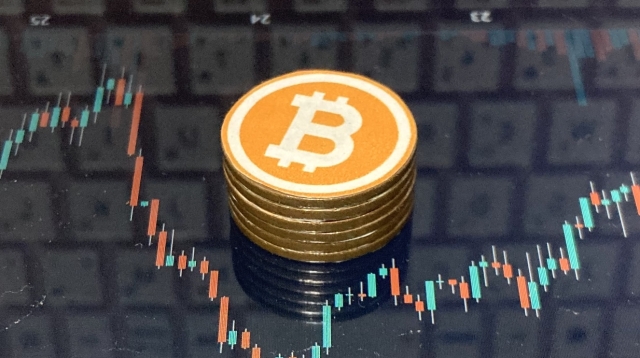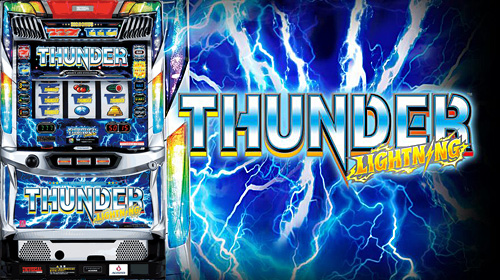[GPT3による要約]
この記事では、社会契約という考え方と、それがパンデミック時に人々を助けるためにどのように利用できるかを論じている。著者は、社会契約は人々が互いにつながりを感じるのに役立ち、多くの人々が感じている孤立感を軽減するのに役立つと論じている。著者はまた、社会契約はコミュニティーの感覚を生み出すのに役立ち、ウイルスの蔓延を抑えるのに役立つと論じている。
プレイ&アーンのゲームで必ず問われる2つの質問と、プレイ&アーンのゲーム開発者が交わす社会契約。
冒険者の皆さん、こんにちは。本日は、"プレイ&アーンド "がプレイヤーに与える、"稼ぐ "以外のユニークな体験について深く掘り下げます。
私の予想では、このような体験のレバーを利用したプレイ&アーンのゲームだけが、長期的に成功し、持続可能であり続けるでしょう1。
そのためには、いくつかの下準備が必要です。
ここではレベル0の分析を行います。アクシーインフィニティはバーチャルエコノミーであり、プレイヤーはアクシーで遊ぶことで収入を得ることができます。
今、新しいギア、新しいレンズ、新しい見方を装備することができます。レベル5:Axiesは収量を生む資産です。実は、自己複製する、なめらかなラブポーション・マシーン。
工場としてのAxie Infinity
この例えを使わせてください。
こう想像してください。アクシーインフィニティは、スカイメイビスが管理する工場です。
その工場内には、アクシーと呼ばれる複数のマシンが存在します。
これらのAxieは、マネージャーが購入することができます。マネージャーはアクシーマシンを自分で操作することもできますし、誰かを雇って操作させることもできます。
いずれにせよ、Axieマシンは生産性を上げるためにオペレーターを必要とします。
アクシーマシンを操作すると、スムースラブポーション($SLP)という原料が発生します。それ以外には使えません。
その工場で生産されたアクシーや原材料を売却すると、取引の4.25%が工場長に支払われます。スカイメイビス
つまり、アクシズや原材料が売られるときは、プレイヤーが原材料やアクシズを欲しがっているから売られているのです。そして、そこからアクシズの需要が生まれるわけですね。
...ですよね?
だから、このアナロジーがどこで破綻しているかがわかると思います。工場がグラフィック・プロセッシング・ユニット(GPU)のような部品を作る場合、その部品はビットコインの採掘、エーテルの採掘...と様々な用途で使用されます2。
それに対して、「スムースラブポーション」を持つ主な効用は、「アクシーをより多く作る」ことである3。
そう、この例えは破綻している。すぐにね。
何が破綻しないかわかるか?
アクシーマシンだ。彼らは死なない。消えたりしない。少なくとも大した量でも方法でもない
彼らはより多くのSLPを生み出し続け、繁殖し、より多くのSLPを生み出すアキシーマシンを作り続ける。
アクシーを純粋に利回り資産として見るなら、アクシーが資本を展開するのに最適な場所でなくなった瞬間、資本は他の場所に行くだろう。
Axiesの割引キャッシュフロー
Gouverneurは、還元的ではあるが、Axie経済について優れた分析を行っている。彼の中心的な主張:SLPを配ることは、本当の価値が生み出されないので、持続不可能である。
すべてのAxieが同じであると仮定する。そうすると、axieが生み出すキャッシュフローは、その将来のSLPの利益と、新しいaxieの繁殖能力(これもキャッシュフローと新しいaxieの繁殖能力を表している)である。
これは、新しく生まれるすべてのアクシーが、時間とともにより多くのSLPを約束されることを意味しています。つまり、繁殖は時間とともにSLPの供給を増加させますが、短期的には減少させるということです。
しかし、指数関数的に新しく作られるすべてのアッキーは、繁殖に必要だったよりも多くの新しく作られたSLPを約束することになるのです。つまり、SLPがその価値を保っている限り、投資家は指数関数的に利益を上げることができるのです。(The Gouverneur)
では、プレイアンドアーンの運命は決まっているのだろうか? そうですね...ここでいくつか疑問があります。
When considering how to make a play-and-earn game. Ask yourself these two questions.
(1) Where does the money come from?
With any work, you need money coming in and money coming out.
Therefore, value has to be created at some stage in the cycle.
Recall that the main marketing of play-to-earn (P2E) games thus far has been “make a living off playing games”: players play a P2E game, with the expectation of some non-negligible cash reward.
If we want games to be profitable, and also take on the additional responsibility of providing financial upside for users, the value must come in somewhere.
For most games, it’s fun. Duh!
A game like Call of Duty is fun, for various reasons, and if you make something players want4, they’ll pay for it.
Remember Level 2? Ways players end up paying for games. (The How)
- Their attention. (ads)
- Their time. (engagement => money, or: Time is Money :))
- Their money. (Microtransactions, full-on premium transactions, skins…)
Remember Level 3? Reasons players might end up paying for games. (The Why)
- Progression. (to save time)
- To save their attention. (remove ads)
- Unlock content / new experiences. (expansions)
- Continue playing a game. (subscriptions)
But, all of this is because, at bottom, they find the game fun.
The question for you to answer: is Axie Infinity worth $500 of fun? (The entry price of the lowest 3 Axies.) They very well could be!
However, with Axie’s economic model the way it is, Axie’s price and breeding profitability is largely determined by demand from new players for Axies.
In fact, Axie Infinity acknowledges as much: in their whitepaper, they say exactly that (“the Axie economy will be dependent on growth and new entrants”.)
With this in mind, Axie Infinity is branding themselves on their whitepaper as closer to Facebook or Grab than a traditional video game.
According to their whitepaper, they plan to bring in external capital via:
- Advertising Fees and sponsorships. They’re the largest community of blockchain users in the world, and “there’s value advertising to a community like this”.
- Nonprofit Organizations and Charities. Conceivable, since SLP is apparently now a medium of exchange in the Philippines.
- Government Donation and Grants.
So right now: most of the money in the game is coming from:
(1) speculators, who hope that the price of Axies and $SLP will go up,
(2) private capital (venture capital, friends and family),
(3) and new players.
That’s a precarious position to be in.
The solution here, and I will keep banging this drum, is to rebrand from “Play to Earn”: if you play, you will earn and make money, to “Play and Earn” — player ownership of their assets.
Let’s look at the social contract that game developers sign when they brand their game as play-to-earn and play-and-earn.
The Social Contract
A social contract, in its most general form, is an “agreement between peoples”. It can be formal, but is most often informally defined.
There’s an existing social contract between game developers and the player in any game. It’s notions of “fairness”, or “progression”, or “explainability”.5 If you break these conventions, you’d either better have a good reason, or be Ian Bogost.
A play-to-earn game is still a game, and must fulfil all of those contracts, in addition to some brand new ones.
遊びながら学べるゲームの作り方を考えるとき。次の2つの質問を自分に投げかけてみてください。
(1) お金はどこから来るのか?
どんな仕事でも、入ってくるお金と出ていくお金が必要です。
したがって、サイクルのどこかの段階で価値を生み出さなければならない。
これまでのP2Eゲームの主なマーケティングは、「ゲームをプレイして生計を立てる」ことでした。プレイヤーは、無視できない現金報酬を期待してP2Eゲームをプレイするのです。
ゲームを収益性の高いものにし、さらにユーザーに経済的な利益をもたらすという責任を負わせるには、どこかで価値を提供しなければなりません。
ほとんどのゲームでは、それは「楽しさ」です。そうです。
Call of Dutyのようなゲームは、様々な理由で楽しいですし、プレイヤーが欲しいと思うものを作れば、そのためにお金を払います。
レベル2を覚えていますか?プレイヤーがゲームにお金を払うことになる方法。(方法)
- 彼らの注目 (広告)
- 彼らの時間。(エンゲージメント => マネー、または: タイムイズマネー :))
- 彼らのお金。(マイクロトランザクション、本格的なプレミアムトランザクション、スキン...)
レベル3を覚えていますか?プレイヤーがゲームにお金を払うことになる理由。(その理由)
- プログレッション。(時間を節約するため)
- (相手の注意を引くため) (広告を消す)
- コンテンツ/新しい体験のアンロック。(拡張機能)
- ゲームのプレイを継続する。(サブスクリプション)
しかし、これらはすべて、つまるところ、ゲームを楽しいと感じるからです。
あなたへの質問:アクシーインフィニティは500ドルの楽しみを提供する価値がありますか?(アクシーインフィニティは、500ドルの価値があるのでしょうか?
しかし、Axieの経済モデルがそのようなものであるため、Axieの価格と繁殖の収益性は、Axieに対する新規プレイヤーからの需要によって大きく左右されるのです。
実際、Axie Infinityはそのことを認めており、彼らのホワイトペーパーにはまさにそのことが書かれている(「Axie経済は成長と新規参入者に依存する」)。
このことを念頭に置いて、Axie Infinity社はホワイトペーパーで、従来のビデオゲームよりもFacebookやGrabに近いとブランディングしている。
彼らのホワイトペーパーによると、外部資本を経由して導入する予定だ。
- 広告費とスポンサーシップ 彼らは世界最大のブロックチェーンユーザーのコミュニティであり、「このようなコミュニティには広告の価値がある」のだそうです。
- 非営利団体やチャリティ。フィリピンではSLPが交換媒体になったらしいので、考えられる。
- 政府の寄付と助成金。
つまり、今現在、このゲームの資金のほとんどは、次のようなものです。
(1) Axiesと$SLPの価格が上昇することを期待する投機家。
(2) 民間資本(ベンチャーキャピタル、友人や家族)。
(3)そして新規プレイヤー。
という不安定な立ち位置です。
ここでの解決策は、私はこの太鼓を叩き続けますが、「Play to Earn」:遊べば稼げる、儲かるから、「Play and Earn」:プレイヤーが自分の資産を所有する、にブランドチェンジすることです。
ゲーム開発者が「Play to Earn」や「Play and Earn」というブランド名を付けるときに交わす社会契約について見てみましょう。
社会契約
社会契約とは、最も一般的な形で、「人々の間の契約」です。正式な場合もありますが、多くの場合、非公式に定義されます。
どんなゲームでも、ゲーム開発者とプレイヤーの間には既存の社会契約が存在します。それは「公平性」、「進行性」、「説明可能性」5といった概念です。これらの規約を破るなら、それなりの理由があるか、Ian Bogostであるかのどちらかでしょう。
プレイ・トゥ・アーンのゲームもやはりゲームであり、これらの契約のすべてと、さらにいくつかの新しい契約を満たさなければならない。
Play-to-Earn & Play-and-Earn
If you raise money through a pre-sale, or token sale, or a sale of NFT characters, as Star Atlas has done — collecting over 50,000,000 USD of revenue in its Galactic Asset Offering, you should deliver your game.
In fact, not just a high quality game you’d enjoy yourself in good conscience — you promise you’ll deliver an earning experience for gamers.
If you market your game as play-to-earn, you’re making a promise that a player is going to earn when they’re in game.
They will think that, it’s an eventuality, a foregone conclusion, that if they spend $10.00 to enter, they will have $10.00, and a little more.
They see it as buying a little Axie machine, or buying a yield-generating asset, rather than buying an in-game item. That’s a lot of pressure.
But that’s the way it is — the moment it becomes play-to-lose, and the game costs more in gas fees to play than the amount of value it generates (either denominated in USD, or the native cryptocurrency), you have broken your social contract, and will get backlash for it.
That’s a heavy load to carry.
On the other hand, that’s a nice car, right?
So please say goodbye to Play-to-Earn. It was a nice dream, but it’s not happening. It’s not sustainable.
I promise.
But we have something better.
With the Play-and-Earn frame, what game developers implicitly promise to players changes. Play-and-Earn is about true digital ownership: where you had 0% of an asset before, you have between 90-100% of it now.
Play-and-Earn is the promise that your assets will always be yours. You can always build upon them. You can trade them away to anyone else, anytime you like.
Players understand that. Build a community around play-and-earn, and your players will actively manage expectations of other players.
We can do better than 0%.
Here’s an example of ‘metaverse ownership’ in the current world:
Roblox claims to give developers about 24.5% of every dollar that is spent in their game.
You require $1,000 USD worth of Robux, their native currency, in your Roblox account in order to withdraw your ‘earnings’. The kicker: they’ll pay you 35 cents on the dollar for each Robux you withdraw. Most of the (younger) developers are children aged below 13.6
So… we can do better.
The social contract of play-and-earn: “well, now you own 95%. We’ll try our best to not debase your asset, but we don’t take responsibility if it goes down. You were here to play a fun game, yes?”
Now that’s a start.
(2) How do I maintain the value for this asset for holders?
Even with the play-and-earn piece, you’re still a steward of people’s finances. Like it or not, people are going to buy into your game. You’re responsible for a community the moment you allow the first person to give you money. Kickstarter sets out a legal framework for you to seek redress if ‘rugged’.
Value derives from utility.
So the question reduces to: how do I continue providing utility for these assets for holders?
You should be able to map out your utility for the asset. Is the token you’re releasing going to: allow users access to special experiences? Will it be used as a medium of exchange to buy game items that they will find valuable? Give them status-as-a-service?7
You can’t get away from the problem of making something people want.
There’s games that won’t ever need NFTs or tokens. It won’t magically transform a game into a playable one.
You might be able to sell people assets on the hype, and your ability to build that game early on, but one day, you will have to deliver on that asset, and it had best match their expectations. Otherwise, you had best rein in their expectations.
Managing that social contract is a big responsibility, so be careful before you raise.
Value beyond Yield.
Now you might say, that’s a bit unfair. It seems that there’s something grossly unfair about the way you stripped down Axie. It’s not just an economy. It’s a game!
And yes, we know that games produce fun.
Here’s the river.
We claim that play-and-earn games can produce specific, non-reproducible type of experiences that people cannot get elsewhere.
For many, it’s been a dream to make a living playing games. I grew up wanting to play Starcraft professionally, but I went off to study Computer Science instead. Now I just write articles about games and make them, which is good enough for me.
But the new wave of Play-to-Earn games offers users (and the next generation of gamers!) (1) a chance to “earn serious cash”8 playing games, and, even more interestingly, (2) unique experiences of mentorship and menteeship.
We come back again to the question of: where does the money come from?
Established earlier: in games, the money comes from fun. But play-and-earn adds a new kind of fun.
プレイ・トゥ・アーニングとプレイ・アンド・アーニング
スターアトラスが行ったように、プレセール、トークンセール、NFTキャラクターの販売で資金を調達し、銀河系資産公募で50,000,000米ドルの収益を得た場合、ゲームを提供する必要があります。
実際、良心的に楽しめる高品質のゲームだけでなく、ゲーマーのための収益体験を提供することを約束する必要があります。
ゲームを "Play-to-Earn"(プレイ・トゥ・アーンの略)として販売する場合、プレイヤーはゲーム中に収入を得ることができると約束することになります。
プレイヤーは、10ドルを使ってゲームに参加すれば、10ドル、そしてそれ以上の収入を得られると、必然的、必然的に考えるようになります。
ゲーム内のアイテムを買うというよりも、小さなアクシーマシーンを買うとか、利回りを生む資産を買うと考えるようになるのです。それは大変なプレッシャーです。
しかし、それが現実なのです。Play-to-Loseになり、ゲームが生み出す価値(米ドル建てか、ネイティブの暗号通貨建てか)よりもプレイするためのガソリン代が高くなった瞬間、あなたは社会契約を破り、それに対する反発を受けることになるのです。
その負担は大きい。
一方で、いい車でしょう?
というわけで、Play-to-Earnとはおさらばしてください。素敵な夢でしたが、実現しません。持続可能ではないのです。
約束します。
でも、もっといいものがあるんです。
Play-and-Earnのフレームでは、ゲーム開発者がプレイヤーに暗黙のうちに約束していることが変化します。Play-and-Earnは、真のデジタルオーナーシップを意味します。
Play-and-Earnは、あなたの資産が常にあなたのものであることを約束するものです。いつでも、その上に構築することができます。いつでも、誰にでも、好きなときに、資産を交換することができます。
プレイヤーはそれを理解しています。プレイ&アーンのコミュニティを作れば、プレイヤーは他のプレイヤーへの期待を積極的に管理するようになります。
0%よりもっとうまくできるはずです。
ここに、現在の世界における「メタバース・オーナーシップ」の例があります。
Robloxは、そのゲームで使われるすべてのドルの約24.5%を開発者に与えると主張しています。
この「収益」を引き出すには、Robloxのアカウントに1000ドル相当のRobuxが必要である。さらに、Robuxを引き出すと、1ドルにつき35セントが支払われる。若い)開発者の多くは、13.6歳以下の子供たちです。
だから...私たちはもっとうまくやれるはずです。
プレイ&アーンの社会契約。"まあ、これで95%はあなたのものです。私たちはあなたの資産を目減りさせないように最善を尽くしますが、目減りしても責任は取りません。あなたは楽しいゲームをするためにここに来たのですね?
さあ、これがスタートです。
(2)保有者のために、この資産の価値を維持するにはどうしたらいいか?
遊びと稼ぎの部分があっても、あなたは人々の財産の管理人であることに変わりはありません。好むと好まざるとにかかわらず、人々はあなたのゲームを買おうとしているのです。最初の人がお金を出すのを許した瞬間に、あなたはコミュニティに対して責任を負うことになるのです。Kickstarterでは、万が一「険悪」な状態に陥った場合に救済を求めるための法的枠組みを用意しています。
価値は実用性に由来する。
つまり、問題は「どうすれば、これらの資産を保有者に提供し続けることができるか」に集約されます。
あなたは、アセットに対する効用をマップ化することができるはずです。あなたがリリースしようとしているトークンは、ユーザーが特別な体験にアクセスできるようにするものでしょうか?ユーザーが価値あるゲームアイテムを購入するための交換媒体として使用されるのでしょうか?サービスとしてのステータスを提供するのか7?
人々が望むものを作るという問題から逃れることはできません。
NFTやトークンを必要としないゲームもあります。NFTやトークンが魔法のようにゲームをプレイアブルに変えてくれるわけではありません。
しかし、いつかその資産を提供しなければならず、それは彼らの期待に応えるものでなければなりません。そうでなければ、彼らの期待に応えなければなりません。
その社会的契約の管理は大きな責任です。だから、上げる前に注意してください。
歩留まりを超えた価値。
今、あなたは、それは少し不公平だと言うかもしれません。アクシーを剥き出しにしたのは、何かひどく不公平な気がします。これは単なる経済ではありません。ゲームなのです。
そう、ゲームが楽しさを生むことも知っている。
ここに川がある。
私たちは、プレイ&アーニングゲームが、他の場所では得られない、特定の、再現不可能なタイプの体験を生み出すことができると主張しています。
多くの人にとって、ゲームで生計を立てることは夢だったでしょう。私も「スタークラフト」をプロとしてプレイしたいと思いながら育ちましたが、その代わりにコンピュータサイエンスを学びました。今は、ゲームに関する記事を書いたり、ゲームを作ったりするだけで、十分なんです。
しかし、Play-to-Earnゲームの新しい波は、ユーザー(そして次世代のゲーマーたち!)に、(1)ゲームで「真剣に現金を稼ぐ」8チャンス、そしてさらに興味深いことに、(2)メンターとメンターシップというユニークな体験を提供します。
ここで再び、「お金はどこから来るのか」という問題に立ち戻る。
先に述べたように、ゲームでは、お金は楽しむことから生まれます。しかし、プレイ&アーンには、新たな楽しみが加わっています。
The Unique Selling Point of Play-and-Earn
Play-and-earn can offer something regular games cannot: experiences of loss and triumph tied to external financial rewards.
Play-and-earn games can aim to deliver something beyond financial return.
Axie can deliver on this aspect with the scholarship model: the ability to engage in mentorship and empowerment.
And indeed, that is why the narrative of Yield Guild Games is so powerful: they’re creating a virtual economy and work in the metaverse for people in local communities, and hire community managers to “help scale YGG with a human touch”.
Take a scholar manager I spoke to, very early in my play-and-earn journey.
Let’s call him Kong (for he had a cute baby CyberKongz as his profile picture.)
I was selling him some Sandbox land, and asked him what he wanted to do with it.
He told me that he wanted to make a small estate (gameplay area) for their Axie scholars to hang out, play minigames that help them earn more.
“The typical ratio for SLP is 70% scholar, and 30% manager, but I’m looking at doing 70% scholar, 20% manager, and 10% game prizes they can win.”
When we have such players (and asset holders) in the game, the scholarship model makes a lot more sense. Because players like Kong are willing and able to give up yield for the experience of mentorship.
The game becomes a tool, a social network, and an enabler for Kong to foster communities.
Beyond this, we can, for the very first time, build economic incentives into games and their communities to encourage:
- socializing [if you log on with a friend to play the game, you can get more done together. If you have no friends, make a new one. Reward consistency of interaction, logging in.]
- excellence [in Axie Infinity, if you’re better at PvP, and your MMR is higher, you get more rewards from winning battles]
I met another manager, who shared with me in depth about his relationship with his scholars.9
They coach their scholars, offer internal monthly competitions and incentives, allow switching of Axies that fit their playstyle. So it’s really… an e-sports team.
E-sports, but for everyone. Furthermore, every victory for the player becomes an emotional event, fortified by additional earnings.
Conversely, every loss becomes an intensely emotional event.
(We will expand on scarcity, friction and conflict as drivers of emotion & gameplay in our next Metaversus issue. Yes, it’s on the way — stay tuned…!)
If you’re a Killer persona (Clubs from L3), then you LOVE to know you just destroyed “millions of ISK” worth of cargo in your latest gank.
Some people just like to watch the world burn.
Value Alchemy
The playfulness of a Pudgy Penguin sliding around on the freezing Ethereum blockchain and the mirth generated can be considered of value. The distilled insights on NFTs and crypto provided by Matty to Metakey holders can be considered of value.
The enjoyment of the aesthetic is enough to justify value — does it matter if its virtual or if its in the real world?
If we look upon an Axie as a machine, then we shall fulfil the Governeur’s prophecy.
However, if we take Axie’s value proposition, and believe that:
There are other types of value that Axie players gain through their journey such as:
Joy of owning a pet.
Fun, rest, and relaxation.
Making friends and finding business partners/mentors.
Learning how to use an important new technology. There's no need for paid "blockchain classes".
Then we’re moving somewhere. But I think, in the end, the most significant thing that accounts for Axie’s success is the community mentorship and empowerment angle. That will be one core dynamic driving play-and-earn.
But remember, now — it is not over. Our burden is not light. In fact, it is of urgency, and of grave importance.
Because when we launch our projects, the world will be watching. When we sell our assets, we sign a social contract with players, who are just as hopeful for this future with true digital ownership. So let’s do right by them, by designing our economies, and our games with care, treating player’s funds with respect, and setting careful expectations.
This is what we signed up for. So best be communicative, careful, and think twice.
Wew, that was an intense one! Level 5 took a long time as I was pretty busy with working on play-and-earn games.
I wrote a tutorial on making your own derivative Loot too.
I’ve also been researching deeply into Star Atlas, an open-world, space exploration, grand strategy MMORPG set in a galactic universe, with play-and-earn mechanics and player ownership. (Oh, and you’ll be able to use VR.)
Here’s potential topics for future issues:
- How Conflict & Friction Drives Gameplay: Digital Scarcity in Diablo II's Beta and Star Atlas
- The Instant Crypto Games Stack
- The success of Yield Guild Games (YGG)
プレイ&アーンのユニークなセールスポイント
プレイアンドアーンは、通常のゲームにはない、金銭的な報酬と結びついた損失や勝利の経験を提供することができます。
プレイ&アーンのゲームは、金銭的な見返りを超えた何かを提供することを目的としています。
Axieは、奨学金モデルによって、この点を実現することができます。
そして実際、それがYield Guild Gamesの物語が強力である理由です。彼らは地域コミュニティの人々のためにメタバースで仮想経済と仕事を作り、コミュニティマネージャーを雇って「人間的なタッチでYGGをスケールさせる手助け」をしているのです。
私がプレイ&アーンの旅のごく初期に話をした、ある奨学生マネージャーを例に挙げよう。
彼をコングと呼ぶことにしましょう(プロフィール写真にかわいいサイバーコングスの赤ちゃんがいたからです)。
私は彼にSandboxの土地を売っていて、それで何をしたいのか尋ねました。
彼は、Axieの奨学生がたむろし、ミニゲームで遊んで、より多くの収入を得られるような小さな領地(ゲームプレイエリア)を作りたいと言いました。
「SLPの典型的な比率は、奨学生70%、マネージャー30%ですが、私は奨学生70%、マネージャー20%、そして彼らが獲得できるゲーム賞品10%でやりたいと考えています"。
このようなプレイヤー(と資産家)がゲーム内にいると、奨学金モデルはより理にかなったものになります。Kongのようなプレイヤーは、メンターとしての経験のために、喜んで収獲をあきらめることができるからです。
ゲームはツールになり、ソーシャルネットワークになり、Kongがコミュニティを育てるためのイネーブラーになるのです。
さらに、ゲームとそのコミュニティに経済的なインセンティブを組み込むことで、初めて奨励できるようになります。
- ソーシャル化 [友人とログオンしてゲームをプレイすれば、より多くのことを一緒に行うことができます。友達がいない場合は、新しい友達を作りましょう。交流やログインの一貫性に報酬を与えましょう]。
- 卓越した【アクシーインフィニティでは、PvPが得意でMMRが高ければ、バトルに勝つことでより多くの報酬を得ることができる】。
別のマネージャーにも会いましたが、彼は奨学生との関係について深く話してくれました9。
奨学生を指導し、毎月の社内コンペやインセンティブを提供し、プレイスタイルに合わせたアクシズの切り替えを許可しているのです。つまり、eスポーツのチームなんです。
e-sportsだけど、みんなのスポーツ。さらに、プレイヤーの勝利は感動的な出来事となり、追加収入で強化される。
逆に言えば、負けるたびに強烈な感動を味わうことができる。
(次号のMetaversusでは、感情とゲームプレイのドライバーとしての希少性、摩擦、葛藤について詳しく説明します。そうです、もうすぐです!ご期待ください...)
もしあなたがキラーペルソナ(L3のクラブ)なら、最新のギャンクで「数百万ISK」相当の貨物を破壊したことを知るのが大好きでしょう。
世界が燃えるのを見るのが好きな人もいるのです。
価値観の錬金術
凍りついたイーサリアムのブロックチェーン上を滑るプーディーペンギンの遊び心と、そこから生まれる歓声は、価値あるものと考えることができます。MattyがMetakeyの保有者に提供するNFTと暗号に関する蒸留された洞察は、価値あるものと考えることができます。
美的感覚を楽しむことは、価値を正当化するのに十分です。仮想であろうと現実世界であろうと関係ないのでしょうか。
アキシーを機械と見なすなら、ガバナーの予言が実現することになる。
しかし、もし私たちがアキシーの価値提案を受け止め、そう信じるのであれば。
アキシーのプレイヤーが旅を通じて得る価値には、他にも次のようなものがあります。
ペットを飼う喜び。
ペットを飼う喜び、楽しさ、休息、リラックス。
友達を作ること、ビジネスパートナーやメンターを見つけること。
重要な新技術の使い方を学ぶ。有料の「ブロックチェーン教室」は必要ない。
それなら、どこかで動いている。しかし、結局のところ、Axieの成功を説明する最も重要なものは、コミュニティのメンターシップとエンパワーメントという切り口だと思うのです。それが、プレイ&アーンの原動力の核となるものです。
でも、忘れないでください。私たちの負担は決して軽くありません。むしろ、緊急であり、重大な意味をもっています。
なぜなら、私たちがプロジェクトを立ち上げるとき、世界はそれを見ているからです。私たちが資産を売却するとき、プレイヤーとの社会的な契約を結びます。プレイヤーは、真のデジタル所有権のあるこの未来に、同じように希望を抱いているのです。ですから、経済とゲームを慎重に設計し、プレイヤーの資金を尊重し、慎重に期待することで、彼らに対して正しい行動をとりましょう。
これは、私たちがサインアップしたものです。だから、コミュニケーションをとり、慎重になり、よく考えることが大切です。
いやー、強烈でしたね。レベル5は、プレイ&アーニングゲームの制作でかなり忙しかったので、時間がかかりました。
派生Lootの自作チュートリアルも書きました。
銀河系を舞台にしたオープンワールドの宇宙探索型大戦略MMORPGで、プレイ&アーンのメカニズムとプレイヤーオーナーシップを備えた「スターアトラス」についても深く研究しています。(あ、あとVRも使えるようになりますよ)。
今後のトピックの候補はこちらです。
- 対立と摩擦はどのようにゲームプレイを駆動するか。Diablo IIのベータ版とStar Atlasにおけるデジタルの希少性
- インスタント・クリプト・ゲームスタック
- Yield Guild Games (YGG)の成功について
おすすめ記事





